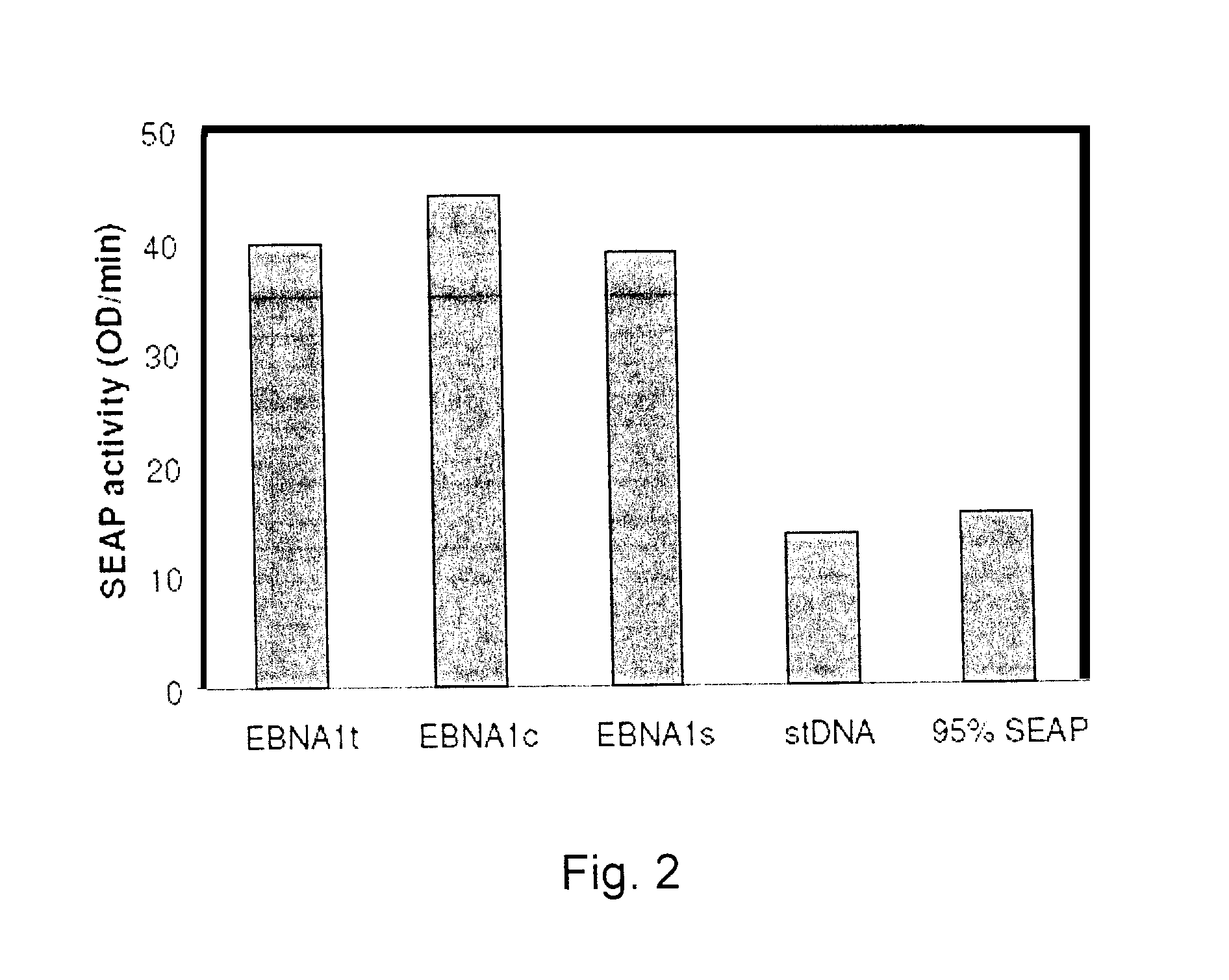Process, vectors and engineered cell lines for enhanced large-scale transfection
a large-scale transfection and protein technology, applied in the field of large-scale transfection and protein production, can solve the problems of low efficiency and productivity, low efficiency of cho cell plasmid vectors used in cho cells, and suffer from large-scale transfection of chinese hamster ovary (cho) cells with cost-effective reagents for the production of r-proteins, etc., and achieve the effect of increasing heterologous gene expression in mammalian
- Summary
- Abstract
- Description
- Claims
- Application Information
AI Technical Summary
Benefits of technology
Problems solved by technology
Method used
Image
Examples
Embodiment Construction
Materials and Methods
[0038]Cell culture: CHO cells are grown at 37° C. in FreestyleCHO medium (Invitrogen) supplemented with 8 mM glutamine in Erlenmeyer flasks shaken at 120 rpm in a humidified atmosphere containing 5% CO2. Cells are routinely maintained between 0.1×106 and 3.0×106 cells / ml. HEK293-EBNA1 cells (clone 6E) are grown at 37° C. in F17 medium (Invitrogen) supplemented with 4 mM glutamine and 0.1% pluronic F68 in Erlenmeyer flasks shaken at 120 rpm in a humidified atmosphere containing 5% CO2. Cells are routinely maintained between 0.1×106 and 2.0×106 cells / ml.
[0039]Cell transfection: For transfection, CHO or HEK293 cells are grown in maintenance medium until they reach a density of 1.5×106 to 2.0×106 cells / ml and then the transfection mixture is added to the cells. For every ml of HEK293 cells to be transfected, 1 μg of plasmid DNA is mixed with 2 μg of 25 kDa linear polyethylenimine as previously described (Durocher, Perret & Kamen, 2002) For every ml of CHO cells to b...
PUM
| Property | Measurement | Unit |
|---|---|---|
| OD | aaaaa | aaaaa |
| temperature | aaaaa | aaaaa |
| length | aaaaa | aaaaa |
Abstract
Description
Claims
Application Information
 Login to View More
Login to View More - R&D
- Intellectual Property
- Life Sciences
- Materials
- Tech Scout
- Unparalleled Data Quality
- Higher Quality Content
- 60% Fewer Hallucinations
Browse by: Latest US Patents, China's latest patents, Technical Efficacy Thesaurus, Application Domain, Technology Topic, Popular Technical Reports.
© 2025 PatSnap. All rights reserved.Legal|Privacy policy|Modern Slavery Act Transparency Statement|Sitemap|About US| Contact US: help@patsnap.com



